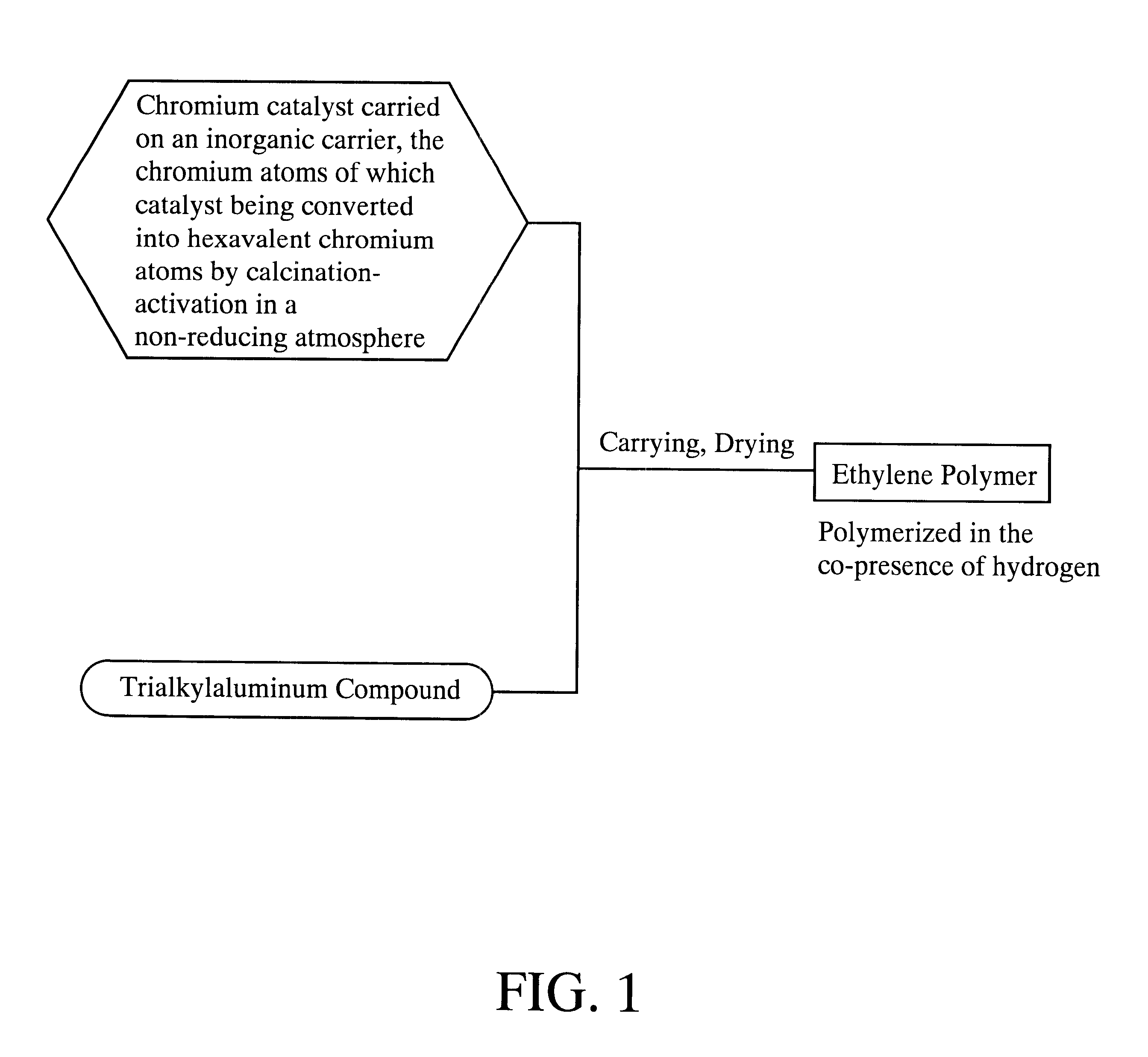Ethylene polymers and method for producing the same
a technology of ethylene polymer and polyethylene, which is applied in the direction of catalyst activation/preparation, organic compound/hydride/coordination complex catalyst, physical/chemical process catalyst, etc., can solve the problems of insufficient properties, inability to meet escr and impact resistance, and inability to mold the article. , to achieve the effect of satisfactory escr and impact resistance, and sufficient properties
- Summary
- Abstract
- Description
- Claims
- Application Information
AI Technical Summary
Benefits of technology
Problems solved by technology
Method used
Image
Examples
example 2
The trialkylaluminum compound-carried chromium catalyst was prepared in the same manner as in Example 1 (2) except that 3.9 ml of 0.1 mol / l hexane solution of triethylaluminum produced by Tosoh Akzo Co., Ltd. (Al / Cr molar ratio=1) was used instead of tri-n-butylaluminum and polymerization was performed using the obtained catalyst. As a result, 220 g of polyethylene was obtained. The polymerization activity per 1 g of catalyst per 1 hour of polymerization time was 4,400 g / g.multidot.hr. The results of measurements of physical properties are shown in Table 1.
example 3
The trialkylaluminum compound-carried chromium catalyst was prepared in the same manner as in Example 1 (2) except that 3.9 ml of 0.1 mol / l hexane solution of triisobutylaluminum produced by Tosoh Akzo Co., Ltd. (Al / Cr molar ratio=1) was used instead of tri-n-butylaluminum and polymerization was performed using the obtained catalyst. As a result, 200 g of polyethylene was obtained. The polymerization activity per 1 g of catalyst per 1 hour of polymerization time was 4,000 g / g.multidot.hr. The results of measurements of physical properties are shown in Table 1.
example 4
The trialkylaluminum compound-carried chromium catalyst was prepared in the same manner as in Example 1 (2) except that 3.9 ml of 0.1 mol / l hexane solution of tri-n-hexylaluminum produced by Tosoh Akzo Co., Ltd. (Al / Cr molar ratio=1) was used instead of tri-n-butylaluminum and polymerization was performed using the obtained catalyst. As a result, 230 g of polyethylene was obtained. The polymerization activity per 1 g of catalyst per 1 hour of polymerization time was 4,600 g / g.multidot.hr. The results of measurements of physical properties are shown in Table 1.
PUM
| Property | Measurement | Unit |
|---|---|---|
| specific surface area | aaaaa | aaaaa |
| molar ratio | aaaaa | aaaaa |
| time | aaaaa | aaaaa |
Abstract
Description
Claims
Application Information
 Login to View More
Login to View More - R&D
- Intellectual Property
- Life Sciences
- Materials
- Tech Scout
- Unparalleled Data Quality
- Higher Quality Content
- 60% Fewer Hallucinations
Browse by: Latest US Patents, China's latest patents, Technical Efficacy Thesaurus, Application Domain, Technology Topic, Popular Technical Reports.
© 2025 PatSnap. All rights reserved.Legal|Privacy policy|Modern Slavery Act Transparency Statement|Sitemap|About US| Contact US: help@patsnap.com

